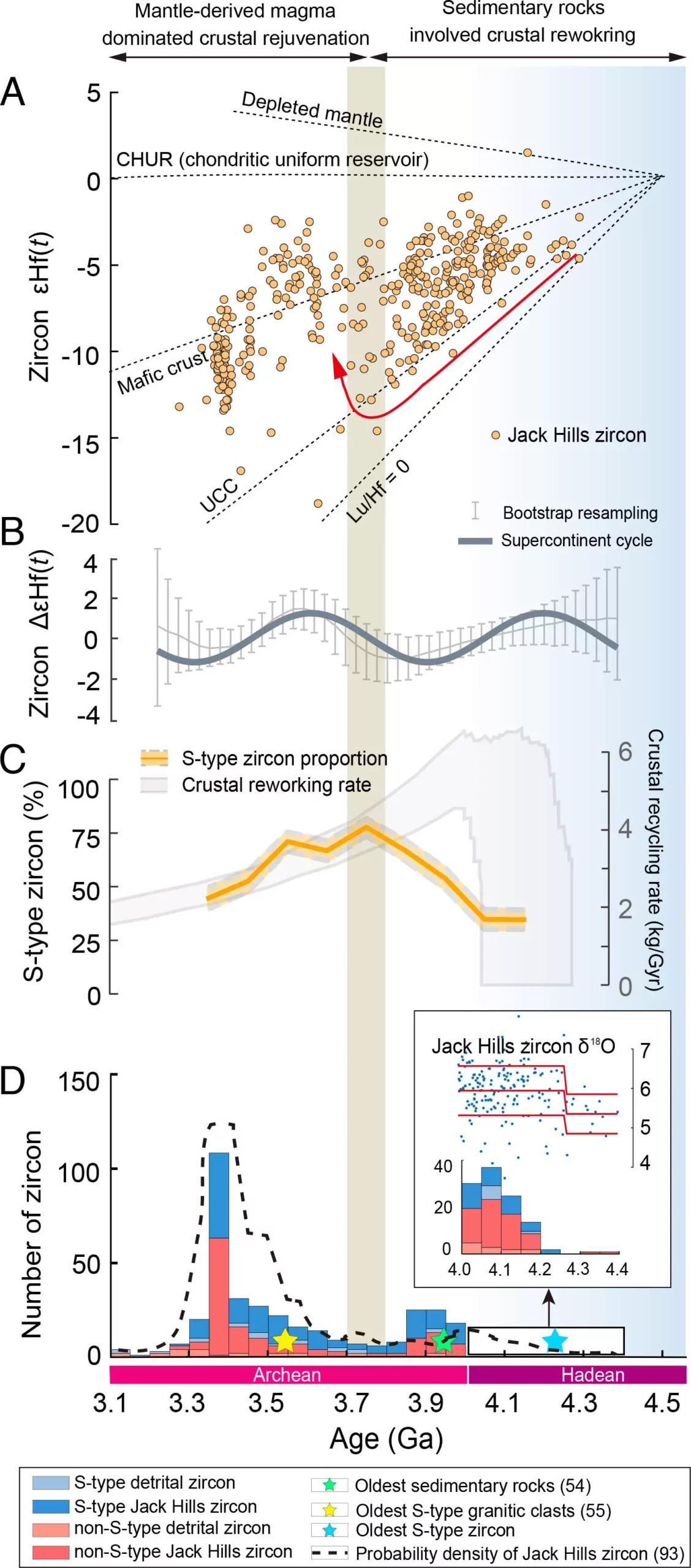Recent research conducted by an international team of geophysicists has challenged the existing timeline for the beginning of plate tectonics on Earth. While most scientists believe that plate tectonics started around 3 billion years ago, new evidence suggests that it may have actually commenced over 4 billion years ago. The team examined zircons from Jack Hills in Australia, with some dating back to an astounding 4.3 billion years ago. This discovery implies that the Earth may have undergone plate tectonics much earlier than previously thought.
Zircons are considered one of the oldest materials on Earth and can provide valuable insights into our planet’s geological history. Previous studies have shown that zircons can form in two ways: by crystallizing directly from magma or by erosion of sedimentary rock. The latter type, known as S-type zircons, contains mica from sedimentary sources, allowing researchers to distinguish between the two. By analyzing multiple zircon samples, scientists can uncover a more comprehensive picture of Earth’s evolution over time.
One of the challenges in studying zircons is the sheer volume of data that needs to be processed and analyzed. To overcome this hurdle, the research team developed an AI application to assist them in their investigation. By training the AI on a large dataset of S-type zircons, the team was able to quickly identify patterns and trends within their samples. The AI revealed that a significant portion of the zircons were S-type and dated back around 4.2 billion years, indicating a period when land may have emerged from the sea. Additionally, the AI highlighted cyclical changes in the zircons that suggested they had been influenced by continental shifts associated with plate tectonics.
The findings of this study offer a fresh perspective on the early history of plate tectonics on Earth. By leveraging advanced technology and innovative approaches, scientists are continually expanding our understanding of the planet’s geological processes. The discovery of ancient zircons dating back billions of years provides valuable clues about the formation and evolution of Earth’s crust, shedding new light on the complex mechanisms that have shaped our planet over time.


Leave a Reply